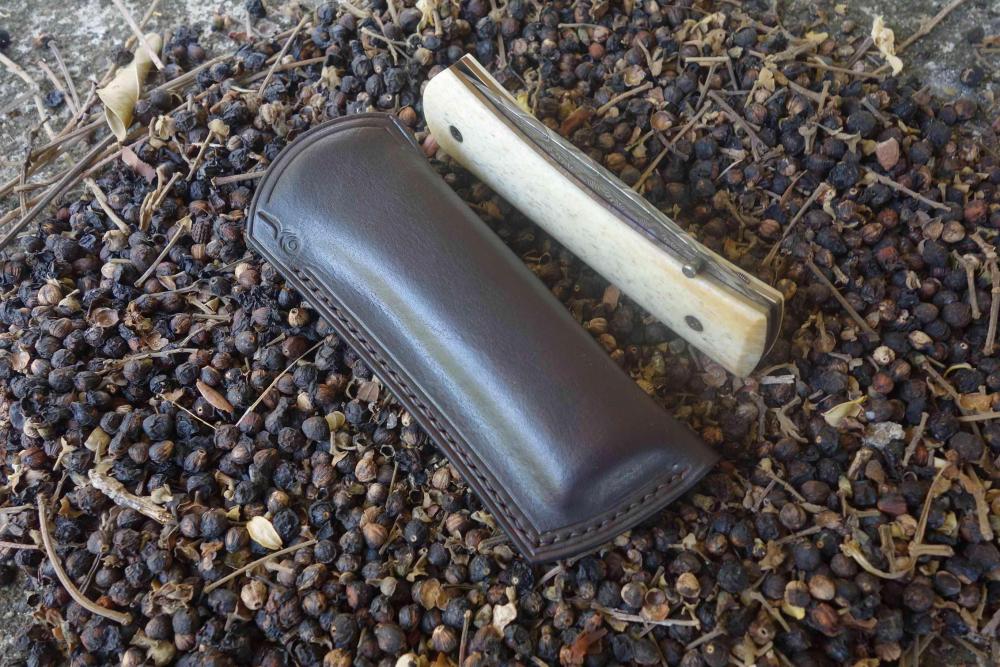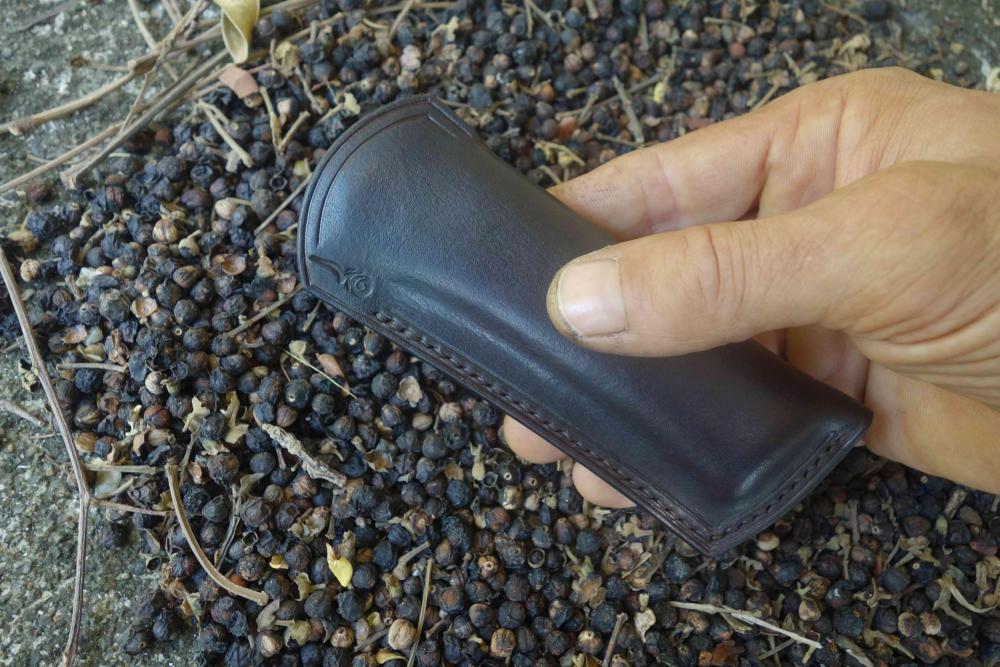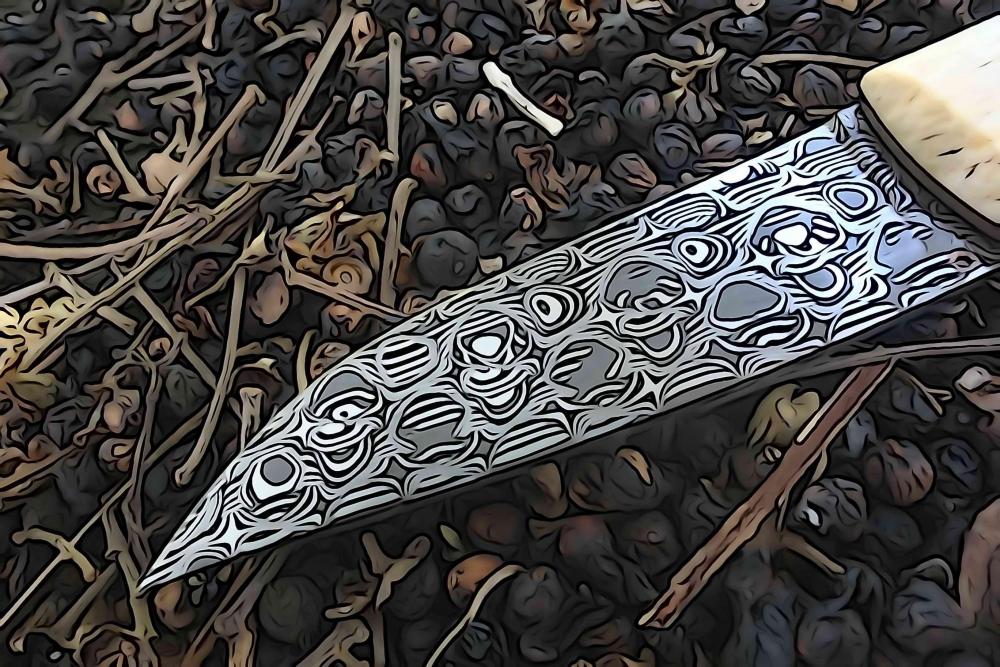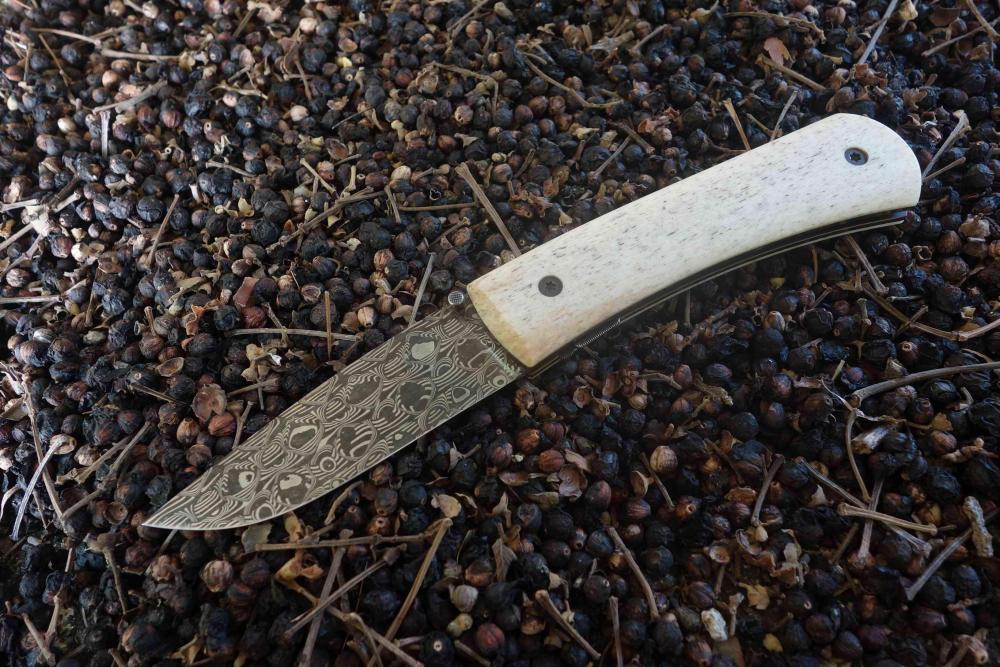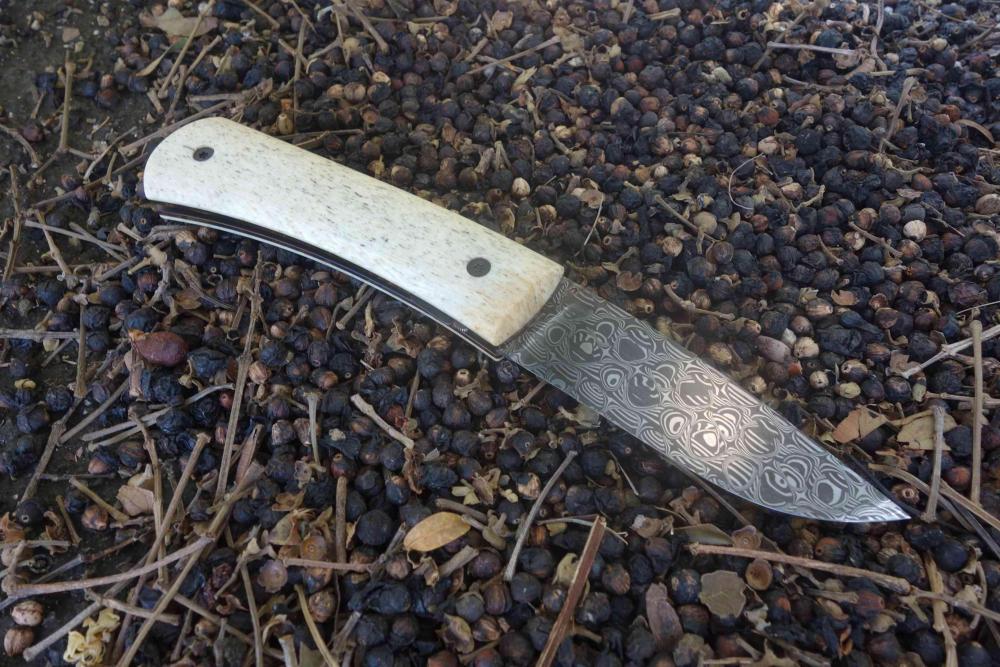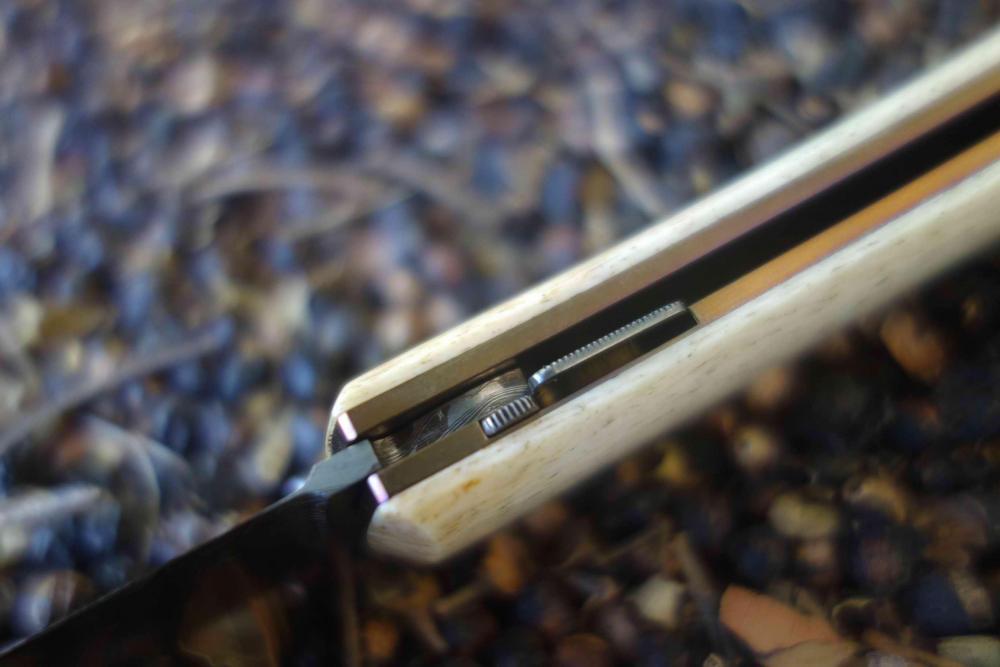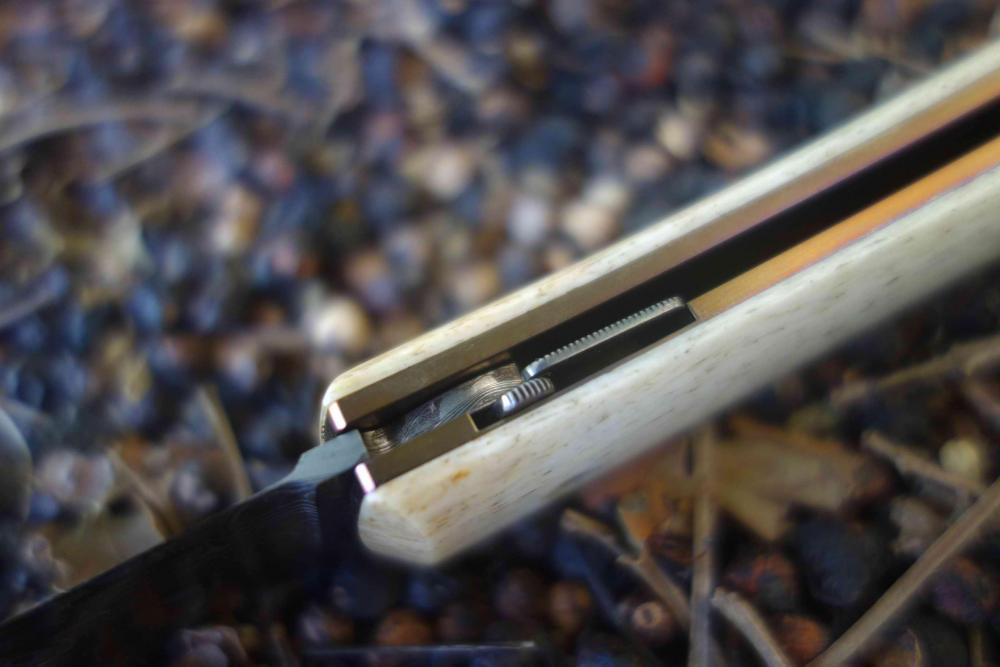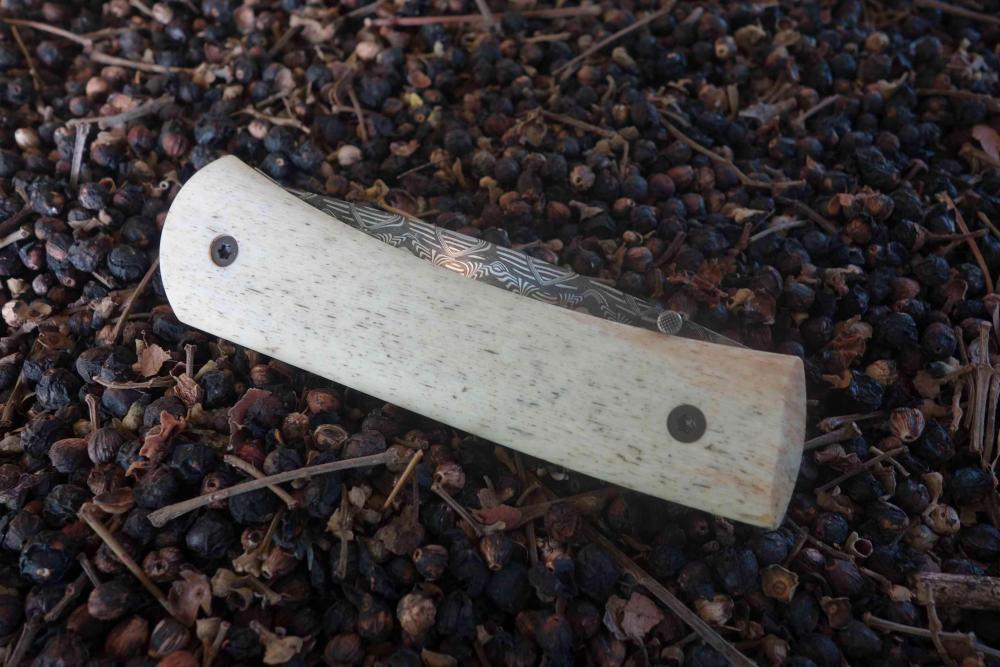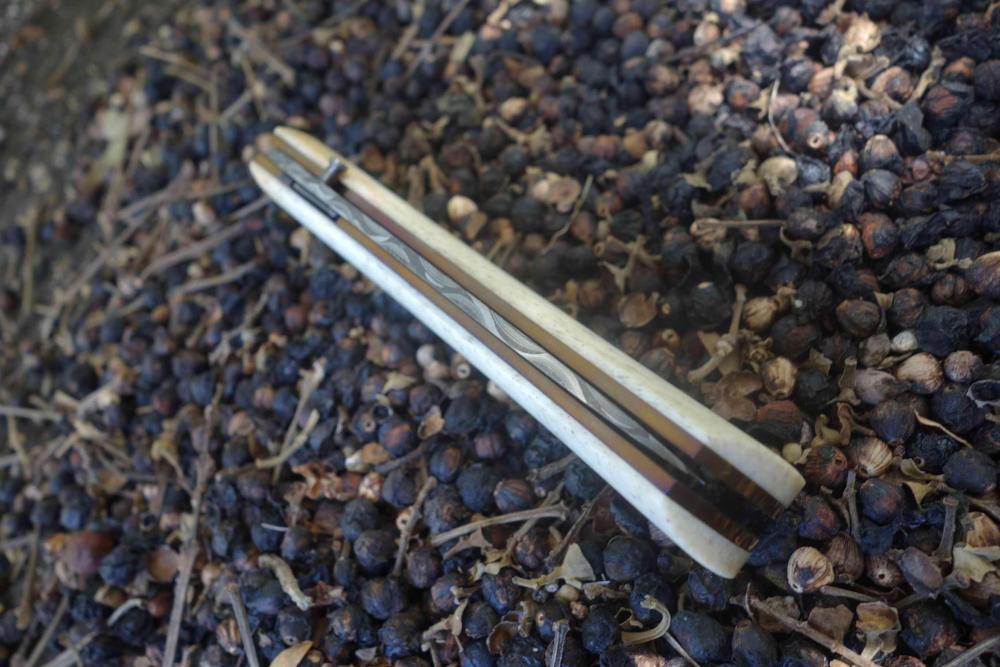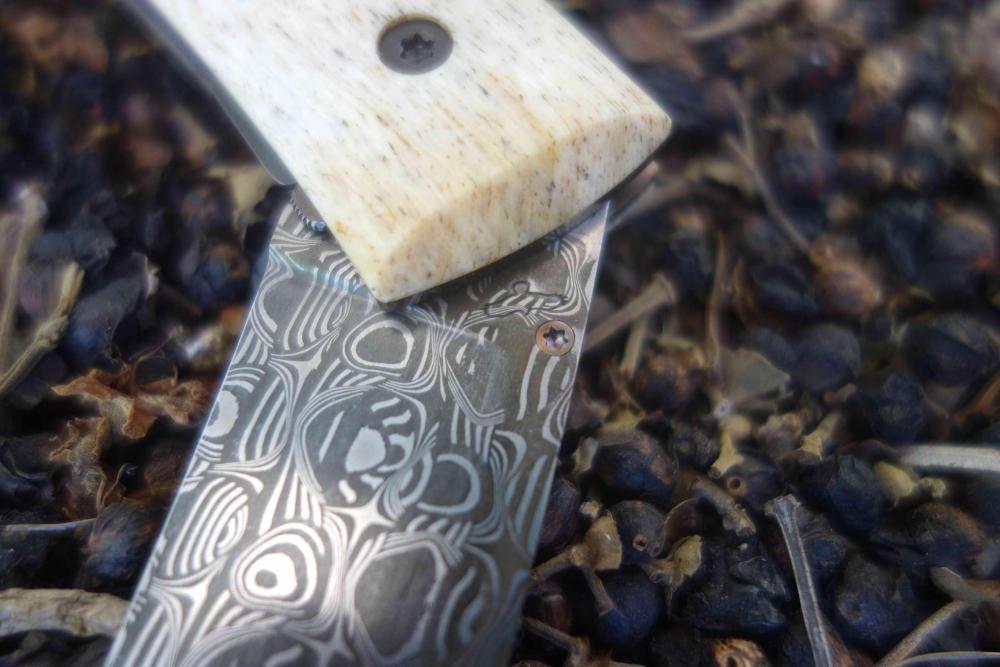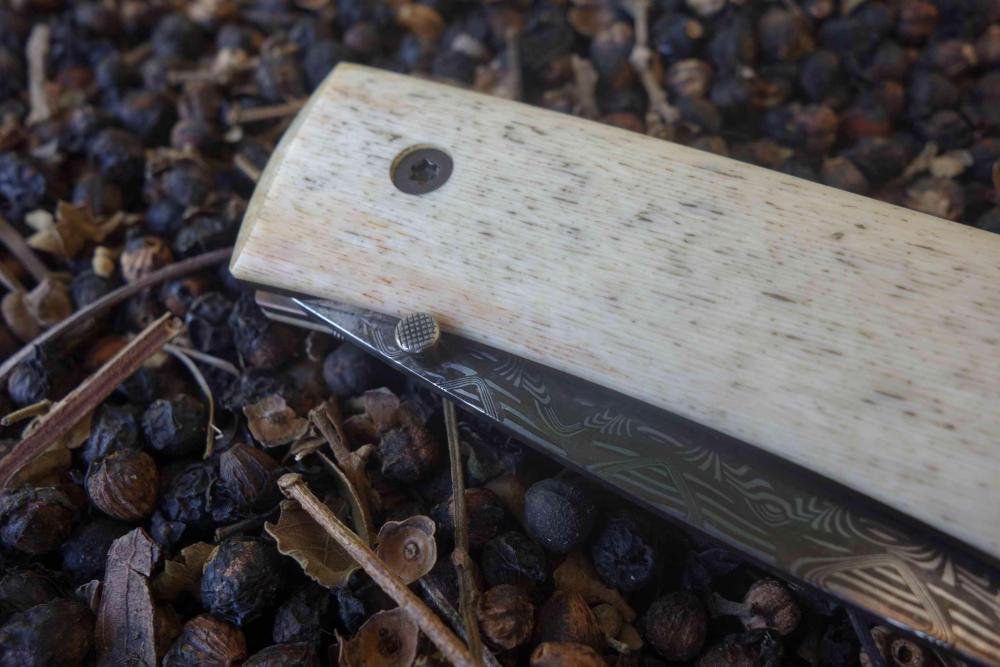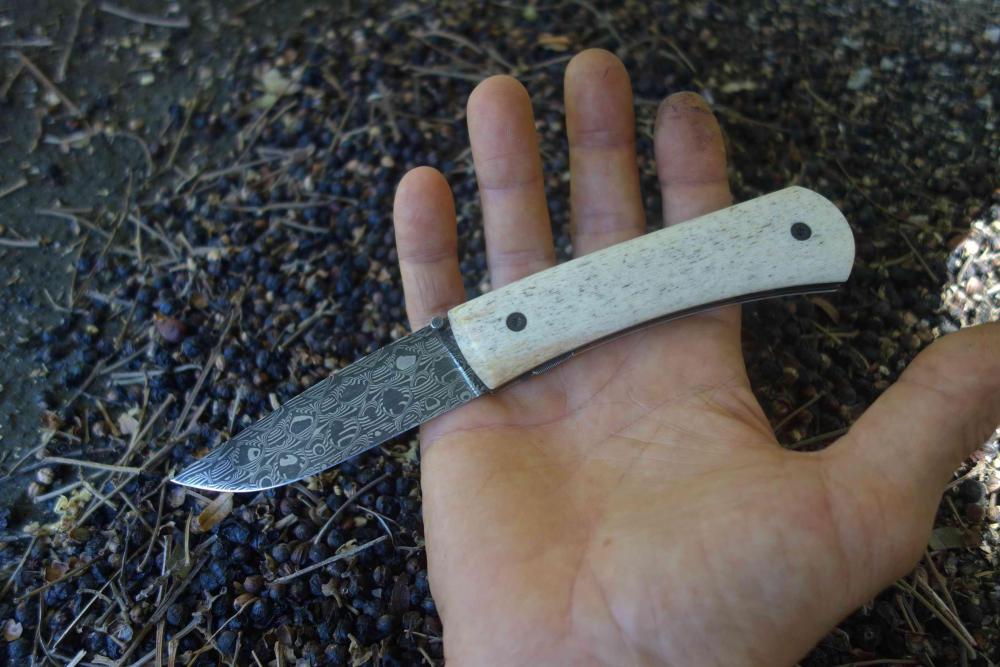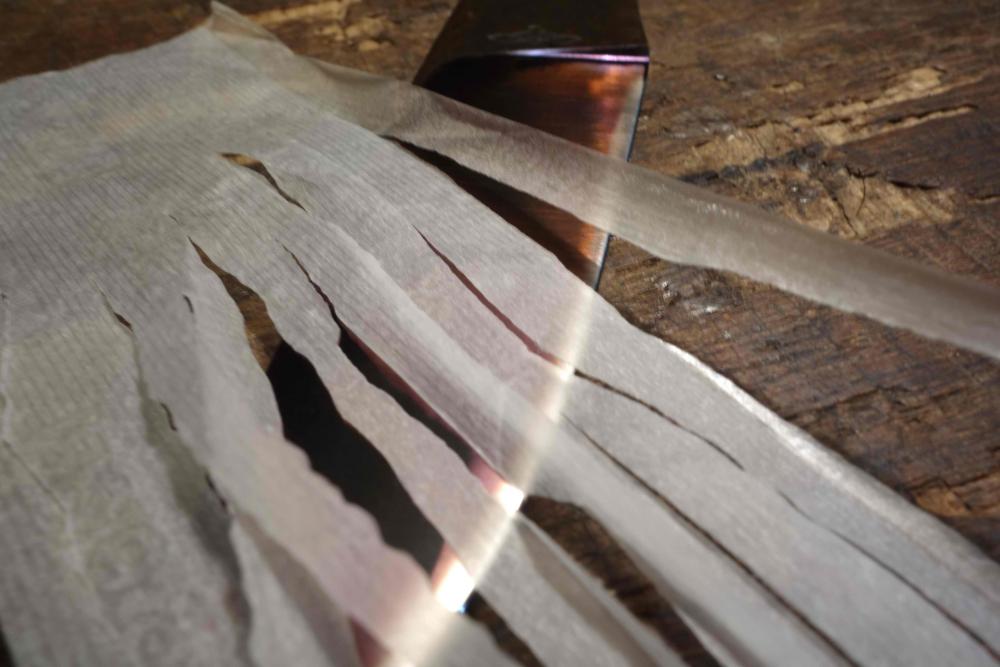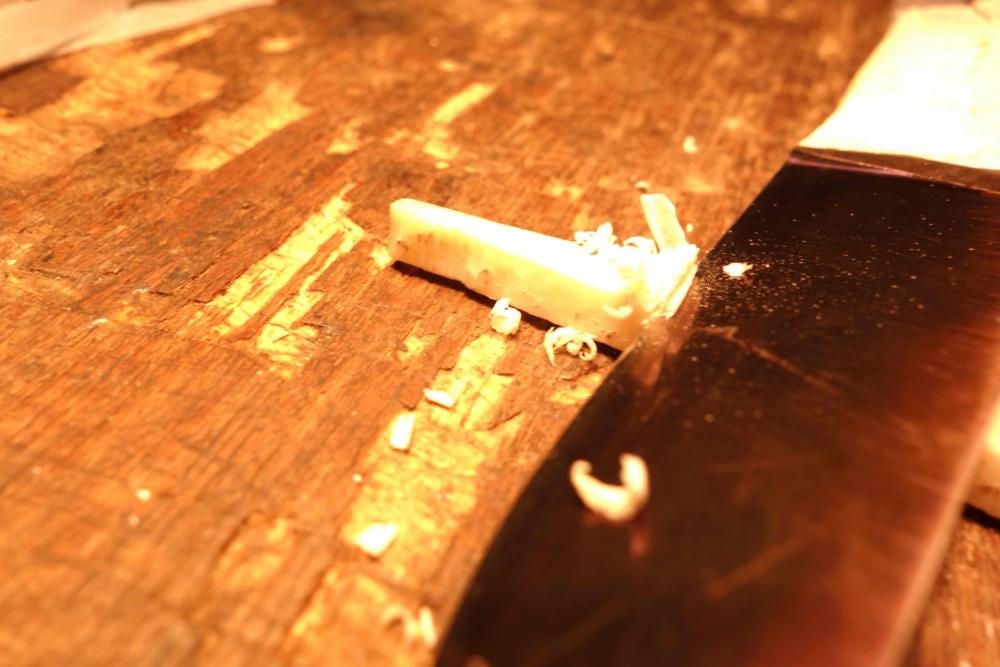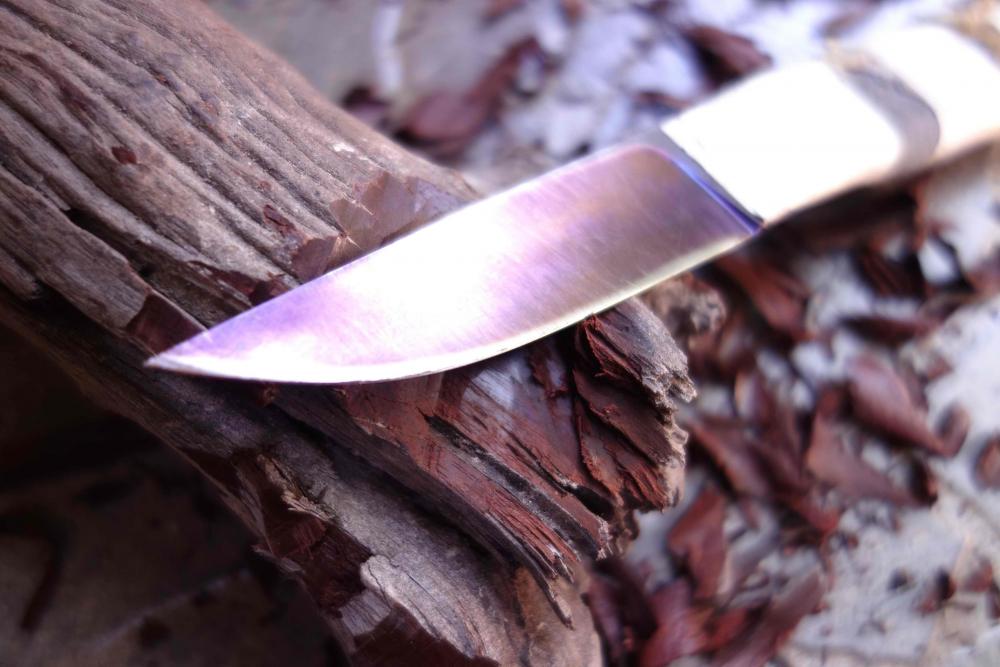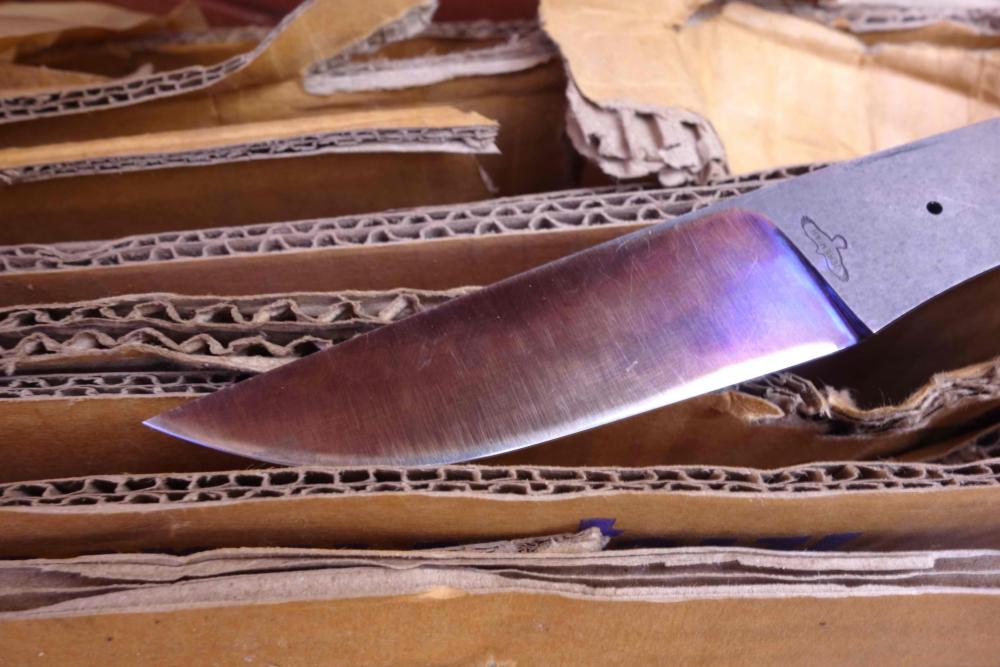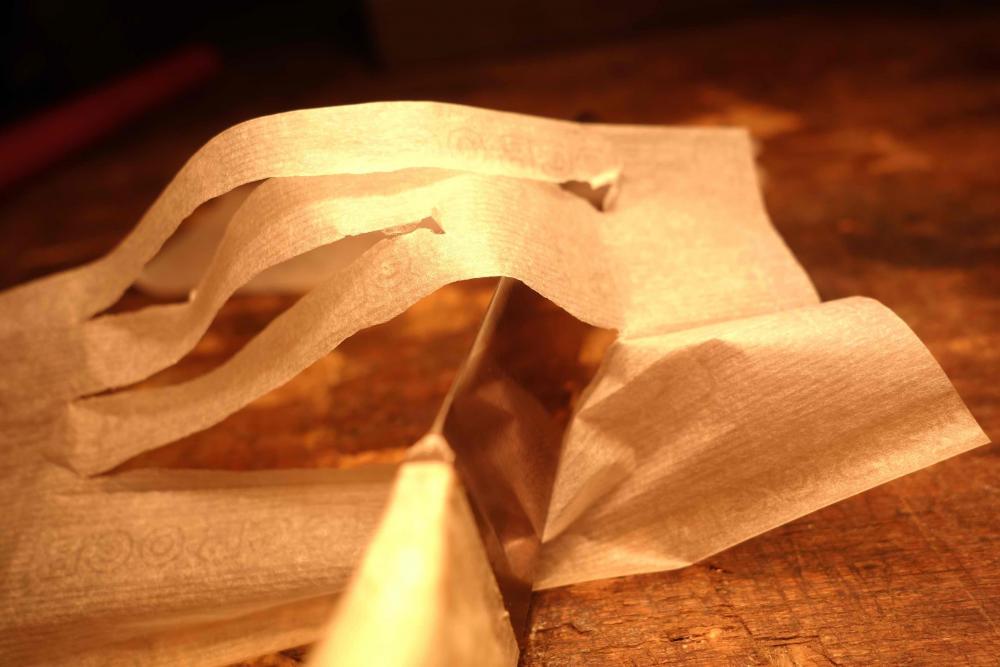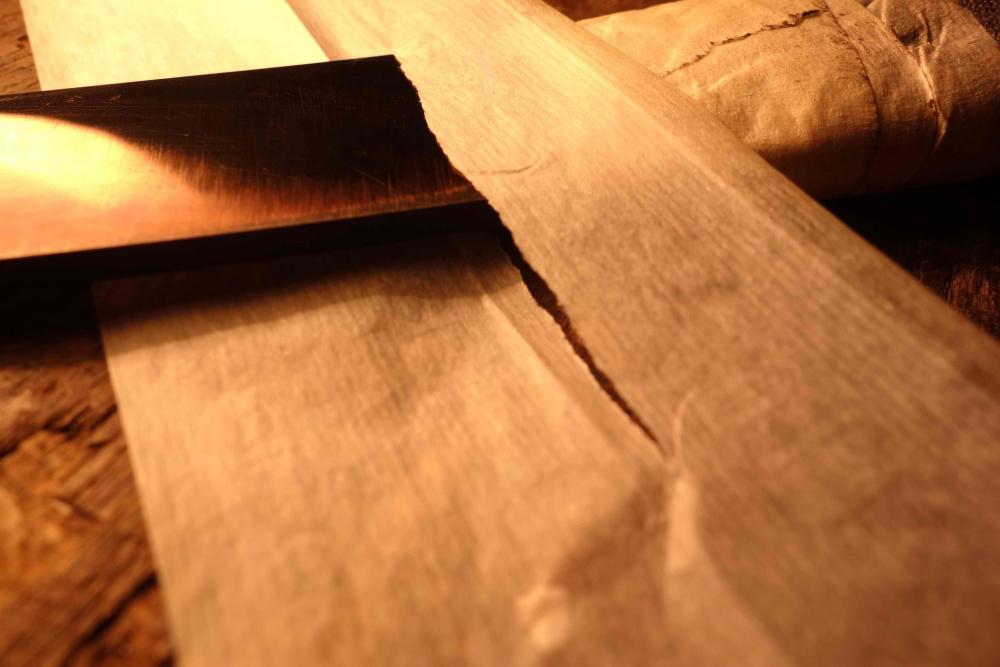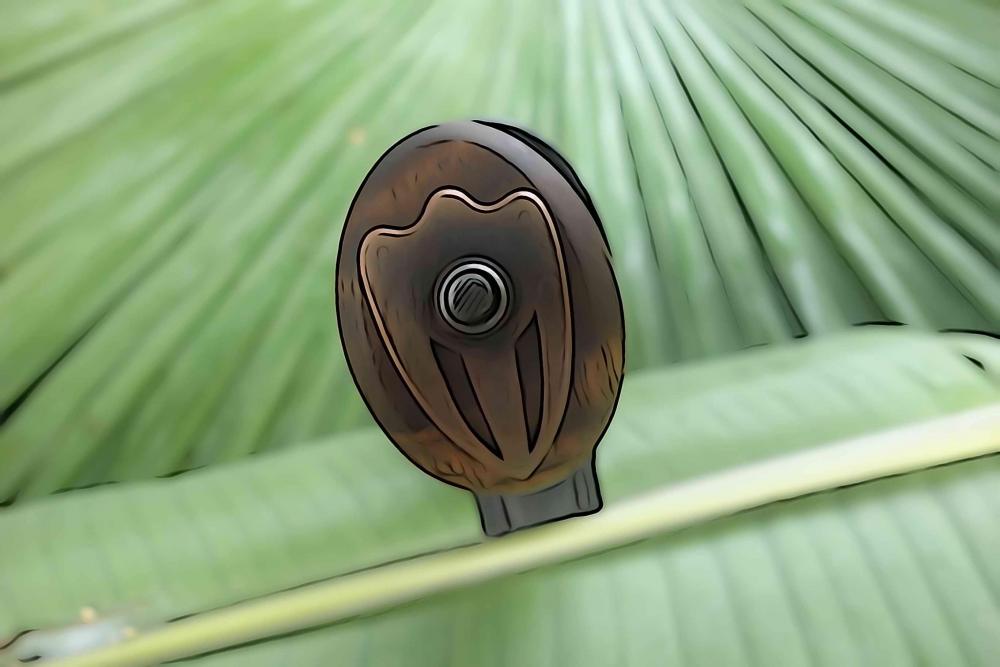-
Posts
448 -
Joined
-
Last visited
Content Type
Profiles
Forums
Articles
Gallery
Downloads
Events
Everything posted by templehound
-
This black locust wood / tree looks to be a very close relative to acacia trees, as with "Robinia pseudoacacia" the name assumes. Also end grain looks very similar to robinia and acacia species. Godd stuff,....drying time 4 years....patience, time goes fast.
-
As far as I know all carbon and-low alloy tool steels can be forged...and of course forging takes them to higher temperatures . all those steels have their own hot working temperature.....and some of them crack faster when forged too cold and some of them burn red brittle, or bright right away when forged too hot, and some of them both. afterwards you have to make up for everything of normal, negative side effects that naturally happen during the forging process in the final HT.
-
Saw this a bit late. I worked with the steel for a couple of blades and it is called after the books a low alloy because of the Mg content, but it reacts like a "non alloyed" carbon tool steel with over 1% carbon. IMHO the several cycles heated to orange made it coarse grain, which results in chipping. This steel should only be soaked until it has reached its quenching Temperature. Not longer.1% carbon is in solution fast, after that grain growth starts immediately. The Mg is only in to slow down cooling rate which makes it more suitable for oil quenching in 810-820 degrees C It is tempered at least with 210 degrees C, two cycles each 50 min.quench in cold water between cycles to prevent tempering brittleness . dont temper above 230 degrees, gets brittle too. I think the most important feature of this steel is its purity.Sulfur content is like shirogami 1 and Phosphorus even 8 times lower. In fact this steel is to me more sensible than other comparable steels and only little differences in HT, including temperature of quenching oil, blade geometry and grinding temperature can have remarkable and different results on blade performance. It works very easy, it is not very edge holding but from good toughness that allows making bigger blades of it with corresponding adjustments in edge geometry. It also sharpens extremely easy....just pick a flat stone form the river shore (or a marble base at a museum)....thus one can assume that it makes good blades for the field and forest....and of course for the kitchen.
-
Hi Willi, it is actually indeed only two steels. On the pictures it is very deceptive, but with the knife in real it is obvious to see that it is only two colored. Thanks Willi!....
-
-
Eutrophicated1, KiltedWonder, Jspool, thanks a lot, guys! KiltedWonder, You live in Isaan....honestly, up there they make the most tasty food in whole Thailand...see You around! Jspool, yes I drilled the liners before sewing....I wanted the leather to be stitched not drilled....more beautiful IMHO
-
There are a couple of things that are good and a few that are not so good. The Damascus knife came out very well, but why did You made that crude notch?....supposed to be a good hook?...or a false edge? The file work with the checkering file back ground is a nice, creative idea, but it should be done before hardening. Torturing the blade with a gas flame is always a subject of discussion but never good for the blade. And there are some heavy grooves in the belly of the grip.....they look that You have started doing them but then....? Even little details need some planning and preparation.....not limiting creativity but controlling the fire of passion. Remember, less can be more. Thats a bit of what I think.
-
....Maybe You guys like to watch this.... https://www.youtube.com/watch?v=AvAgpu1QX_I Cheers
-
-
This folder with locking liners has a damascus blade with approximately 300 layers of O2 and 75Ni8. 6Al4V liners and the scales are buffalo bone .It has an additional titanium lock and the locking spring is made from high carbon spring steel 1.1274. Blade measures 93 mm and 212 mm overall length, etched in instant coffee. Again another semi industrial made damascus steel from my old friend and colleague Achim Wirtz http://www.lohmann-stahl.de/1/contact/ I expected that the pattern would look like rain drops but it looks more like wall bricks, mignon filets and dwarf heads...I like the pattern a lot. Cheers
-
As far as I know honing steels are used at a time good steels with high carbon were rare and more expensive than today. Those days surgical instruments for example were over 60HRC hard, but common working blades mostly ranged in the mid 50's HRC or less. It is only to bring an edge of a less hard knife upright again.Honing steels are not abrassive.(what Kozzy said) due the leverage a honing steel only makes some effect in the middle of the blade, the rest of the blade stays dull If You have a today a blade with 61HRC and hone it on the steel that might have 62-63 HrC, not much will happen. Who tries planing soft wood with a planing blade made of hardwood? By the way those honers make super blades. In Germany 20 years ago this artificial ruby came up and is still the most used sharpening medium....(take google translate)http://de.abrasiv.wikia.com/wiki/Sinter_Rubinsteine
-
Leaf spring steel is due its high Silicon content definitely quite uncomfortable to forge by hand.Silicon also has negative influence on value impact...and for a good chopper we need value impact leaf spring blades are the best when they are dull...than they are stable....the Carbon content is also low and after several rounds in the coal it is even lower...to much issues to call it a good choice for big blades(and for small ones of course also) the superior elastic properties needed in a car leaf spring are much higher than in a blade, so they are very good for what they are designed...good springs Leaf springs are used all over the world for big blades, not because its a superior choice, its because it is available and cheap ...where a pick up truck can go, you will find leaf springs...even in the thickest jungle. but in good infra structure you will find 5160(which is different from leaf springs(as far as I know) in the silicon content)that stuff moves a lot easier under the hammer. and a real excellent choice is 1.2833 (100V1)...this steel makes real awesome chopping blades...and forges easier than leaf springs.
-
...... I forgot to mention that the best testing(of course all IMHO) is, to carry and use the blade for an amount of time.Of course it is not possible for a full time maker to do this with every blade, the same with testing abrasion resistance on cutting cardboard. so it reduces it to testing the stability of a fine edge which is to me actually more important than testing wear resistance....like for example: it is technically obvious that O7 is more abrasive resistant than 1095 ....how is that said in English?....we can tell it i/fromn the books? I had over the years now and then a blade which I was not satisfied with the grind and sorted it out.Such blades remain on the bench and being used and abused for all the dirty work I wont use a blade normally....and I was often amazed what these knife blades could and did endure. Cheers
-
.....Wow!!....speachless is what I am...
-
Well, to compare cars with knives is often pretty compatible....if You drive the car against a wall and it is damaged , so it dosent mean it was a bad car. IMHO It is the same with chopping nails(work of a cold chisel!)....a knife which can do this is simply dull, thick edged and not capable of cutting anything else than do coarse chopping. or some "tactical"prying. The same with bending....a big blade with 10inches by 4 mm thickness made of 1.2552 You wont be able bending it at all to 30 Degrees, the strength of this alloy is so solid and firm....it is possible but with a lever. and beyond 40Degrees it will break like an explosion and You will stagger away from the vise, because of the amount of force compared to body balance. But every maker has its testing, which is the free room of what every maker needs or believes. Blades that are meant to cut should be tested with cutting. Every new born blade I sharpen until it has got even burr.After removing the burr I take extra thin cigarette paper and I look at the cuts if there is tearing at the paper fibres. It should be possible to cut fine stripes by stripe.You will see, where the burr is not removed completely...there the cut stops. I start with gently whittling a piece of giraffe bone.....examine with a magnifying glass the effects, followed by another cut in the paper to check Followed by whittling ironwood and (sometimes) cutting card board...always checking the effect in the tore of the cigarette paper after testing the blade still was hair popping, but has a bit tore on the paper. Blade is made of O7, ground on the edge to 0,3 mm and has about 61HRC +/-1 Cutting bone and hard wood is IMHO much more telling in less time than cutting card board...because with some alloys You need to cut a lot of card board until You can tell something about wear resistance.....too much time and card board messed all over the shop, You also need a temporary handle option to be able to make at least 100 cuts without hurting your hand but again, knives are in a big range of what the maker expects and aim for.
-
Nice work!.....clean lines indeed and interesting lamination of the blade (the guard plate could have a millimeter more in thickness, but not necessary.) .... the backdrop is so fatal that it is nearly art
-
Nice tool You made there. On the pictures, which are quite good, I see that the edge is still much too thick. Like most of these tools it should have a only single bevel on the outside. If its single beveled and thin enough than You can sharpen (strop) it with a wet sanding paper file maybe You take a look at this.Even if it is much bigger in the radius it shows excellent blade geometry, that will work fine and sharpen easy. https://www.google.com/search?q=edge+geometry+on+spoon+carving+knife&tbm=isch&tbo=u&source=univ&sa=X&ved=2ahUKEwiBsbSBgbvfAhWVfisKHSCTCJ0QsAR6BAgDEAE&biw=1093&bih=501#imgdii=VJoyGBHNdV4DEM:&imgrc=_pt7b00_ZpavXM: Cheers
-
-
First Knife Attempts (Photo Heavy)
templehound replied to Coyotebait's topic in Knife making Class General Class Discussion
Thank You for Your kind words, Neil.I appreciate them Merry Christmas -
First Knife Attempts (Photo Heavy)
templehound replied to Coyotebait's topic in Knife making Class General Class Discussion
Now is it to the point, where I understand it even less than before....in my understanding You try to interpret something between the lines..? But I have to point out that "such" conversation is far above my skills in speaking English, so the chance that I get You completely wrong is there for sure. As the same that I didnt red the edition of the book in English.I red the book in its German edition and it is far away of beeing insulting, neither cynical nor sarcastic. In fact it is a very good book, with the intention to educate people so that there can be better qualities in the result....dosent matter if you are blade-or blacksmith. Old school saying in German is right in the face, especially in the profession of metal working society...its about precision in word and in deed, so nothing comes from behind. Nobody needs that to make good quality and quality is what counts....not what might be there between the lines. I dared to pick up Your words but feeling pretty unsure if I got this right, hope You dont mind and still see the conversation with and of good will. You have some serious knowledge about the whole thing, I like this and respect this a lot. with all due respect Daniel PS: that has nothing to do with the topic of Coyotebait, sorry man, that we went in and an off topic direction Cheers -
First Knife Attempts (Photo Heavy)
templehound replied to Coyotebait's topic in Knife making Class General Class Discussion
Sly, a lot of good advices in my opinion You are giving there.You mentioned Verhoevens book, thats the best advice....i just dont understand what name is an insult? -
First Knife Attempts (Photo Heavy)
templehound replied to Coyotebait's topic in Knife making Class General Class Discussion
A forged frying pan as "the inspiration" for making knives.....kinda cool The second knife is the serious one. the first and the third are honorable efforts but ...Nr.one has only wrapped handle and like it looks just a fat uneven bevel on flatstock and Nr. three is still half a wrench that will turn in the hand while chopping....so my focus is on Nr2 as a developed knife.....that came out ok, mate. still there are a lot of aspects to improve.Like control over HT(you need a Thermometer!) understanding blade geometries(thinner edges, !) avoid fancy profiles like finger grooves like on Nr2 which is undeveloped ...keep it more! simple and so on.... it is difficult and time consuming to advice You in all the right directions, so lets turn the spit over and ask You: What is it that You need to know?....what makes You struggle the most?....how can I(we) help You?..... all in a nut shell,...with Nr2 You did a good job! Good luck and Happy christmas. -
-
.....aah!...cat hair,...I missed that completely
-
If thats a crack, it is in the middle of the flank and away from the edge. Its IMHO not that fatal like the tang but on the other aspects I agree with You too in old school technique(sorry I am pretty old school) it is a tapering, form fitting construction from both parts like on the drawing. (I took it from an explanation to a German fellow so the words are in German and translate tang(Angel), ferrule(Zwinge) and grip material(Griffmaterial)) Cheers

